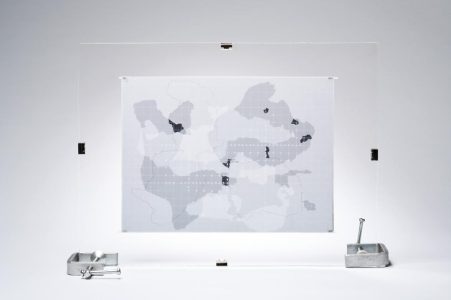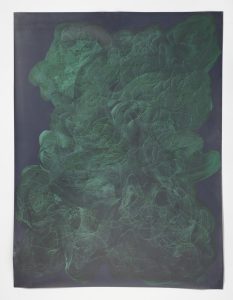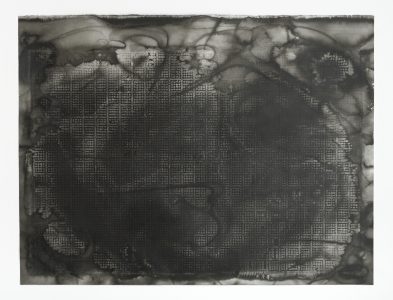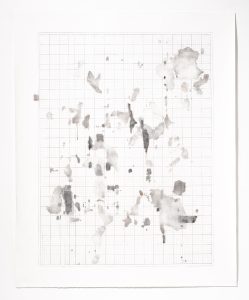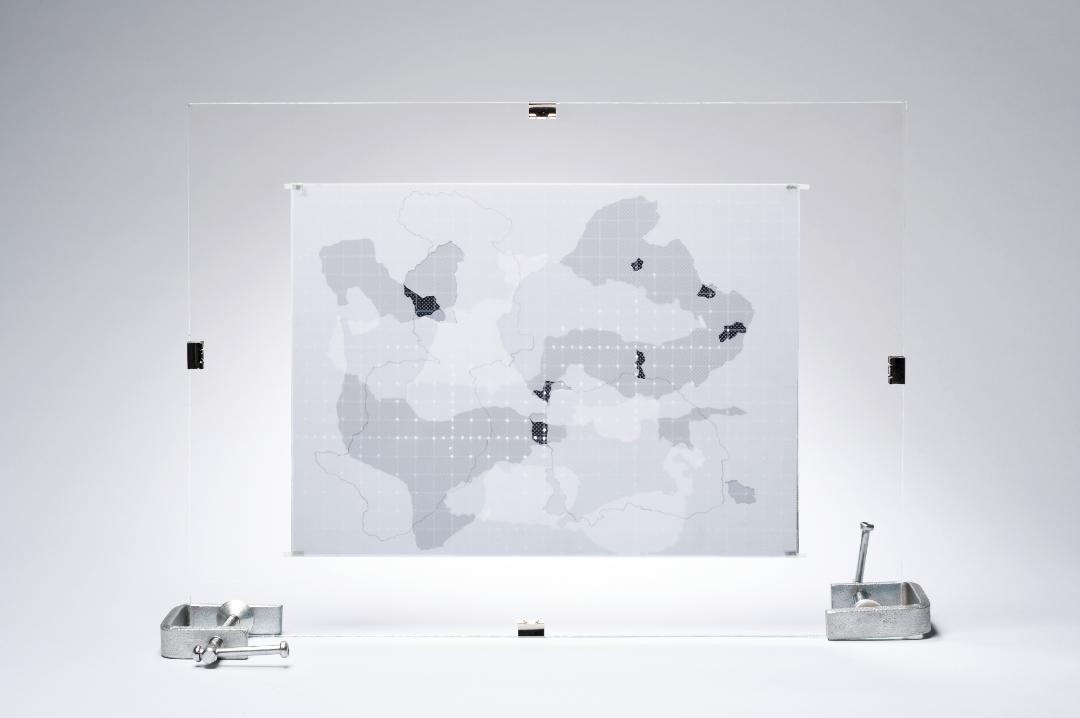
OPENING
FINISHING
Crossing over
Crossing over
Going beyond the modern dualism of nature-culture separation, Amélie de Beauffort proposes an aesthetic approach that questions the artist/drawing relationship and the connections between man and the world.
Not the artist’s anxiety of the blank paper is at stake here, but the different possible agreements she can establish with paper or other materials, her physical and metaphysical contact with the support. It is to the latter, in its materiality, that the artist-interlocutor addresses herself as a partner. Such a relationship can lead to biomorphic writing, as we shall see later.
Encouraged by her readings of G. Deleuze and the very current paradigm of mesology, Amélie de Beauffort is concerned with the interactions she sees or makes possible between her environment and life that follows its course. For Augustin Berque, author of several works on the mesology paradigm, it is urgent to reconnect with the cosmos, to “recosmize” human existence, in other words to rediscover a sensitive, qualitative, transitive link with the earth.
In concrete terms, Amélie de Beauffort works by piercing, punching and graphitizing various surfaces to allow emptiness, light or a gaze to circulate. The dynamic tensions she creates encourage, create or recreate passages between different worlds. Most importantly, the passage between the artist and the paper or other existing supports she encounters as interlocutor. In this passage, the artist is no longer in control of her work, but rather in symbiosis with the elements she encounters.
The artist allows them to react in their own way, giving them the opportunity to do so or soliciting them in sometimes incongruous ways. Not hesitating to compare herself to a tick, she takes up the 3 functions dear to J. von Uexküll and G. Deleuze: to let herself fall, to explore, to pierce. From then on, the support or screen is no longer passive, or even considered as such, but rather an active agent reacting to it.
This encounter with the support – be it paper, a protective mat on the worktable, a grid serving as a filter or some other screen – is particularly significant for a contemporary awareness.
The loss of grand narratives and themes enables us to focus on a present-here and to look at it in a liberating, i.e. transformative, way.
Amélie de Beauffort’s artistic approach reveals this point. Her encounter with surfaces as spaces manifests a state of mind that is available to … and reconfigures unexpected connections between us and the world. We are therefore invited to perceive the relationships between the different poles that modern thought has striven to separate. The subject (man) can then be reconciled with the object (nature), which in turn allows the animal and plant world to regain the right to communicate.
Amélie de Beauffort’s exhibition in our gallery corresponds in every way to the vocation of art that we defend and which constitutes its philosophical line.
The best example of this is a piece presented in the exhibition, an invitation from the Greta Meert Gallery, which remained in the artist’s mailbox during the holidays and underwent an “artistic” metamorphosis. Sucking snails, having appreciated the quality of the paper and ink, transformed the inviting letter into a work revealing our conception of the encounter: a shared otherness.
Obviously, the snails have left traces, so one might wonder if they are capable of writing? In any case, there is something in their biosemic message that suits Amélie de Beauffort and that we in turn will retain as an invitation to immerse in the world of the living as well as to a reconciliation, even a complicity with it.
Simone Schuiten
Translation Renaat Beheydt
